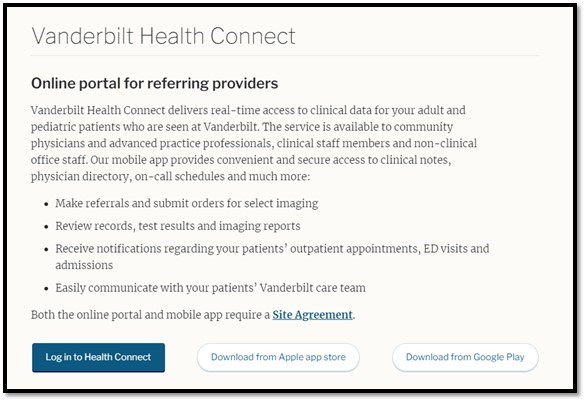Physician Search
 |
 |
| Consuelo Wilkins, MD, MSCI, Senior Vice President for Health Equity and Inclusive Excellence for Vanderbilt University Medical Center (VUMC) and Senior Associate Dean for Health Equity and Inclusive Excellence for Vanderbilt University School of Medicine, always knew she wanted to be a physician. "Health equity was built into everything I did, even if I didn’t know it or recognize it at the time," Wilkins said. "I have always learned and believed that people are the same — everyone deserves to be healthy, and everyone should have the best opportunities to take care of themselves and their families." Click below to learn more about health equity initiatives. https://momentum.vicc.org/2021/09/everyone-deserves-to-be-healthy/ |
Vanderbilt was the lead site for an NIH-funded, phase 2, multicenter influenza vaccine study in pediatric allogeneic hematopoietic stem cell transplant (HCT) recipients that may lead to a change in the current flu vaccine recommendations in this vulnerable population. Natasha Halasa, MD, MPH and colleagues recently published in the New England Journal of Medicine, that two doses of high-dose trivalent flu vaccine resulted in higher amounts of influenza-specific antibodies than two doses of standard dose quadrivalent vaccine. https://news.vumc.org/2023/03/02/high-dose-flu-vaccine-beneficial-for-pediatric-stem-cell-transplant-patients/ |
Imatinib Mesylate and Combination Chemotherapy in Treating Patients with Newly Diagnosed Philadelphia Chromosome Positive Acute Lymphoblastic Leukemia
Multiple Cancer Types
This randomized phase III trial studies how well imatinib mesylate works in combination with two different chemotherapy regimens in treating patients with newly diagnosed Philadelphia chromosome positive acute lymphoblastic leukemia (ALL). Imatinib mesylate has been shown to improve outcomes in children and adolescents with Philadelphia chromosome positive (Ph+) ALL when given with strong chemotherapy, but the combination has many side effects. This trial is testing whether a different chemotherapy regimen may work as well as the stronger one but have fewer side effects when given with imatinib. The trial is also testing how well the combination of chemotherapy and imatinib works in another group of patients with a type of ALL that is similar to Ph+ ALL. This type of ALL is called ABL-class fusion positive ALL", and because it is similar to Ph+ ALL, is thought it will respond well to the combination of agents used to treat Ph+ ALL.
Pediatric Leukemia,
Pediatrics
III
Friedman, Debra
NCT03007147
COGAALL1631
Accelerated or Standard BEP Chemotherapy in Treating Patients with Intermediate or Poor-Risk Metastatic Germ Cell Tumors
Germ Cell (Pediatrics)
Germ Cell (Pediatrics)
This phase III trial compares the effect of an accelerated schedule of bleomycin sulfate, etoposide phosphate, and cisplatin (BEP) chemotherapy to the standard schedule of BEP chemotherapy for the treatment of patients with intermediate or poor-risk germ cell tumors that have spread to other places in the body (metastatic). Drugs used in chemotherapy, such as bleomycin sulfate, etoposide phosphate, and cisplatin, work in different ways to stop the growth of tumor cells, either by killing the cells, by stopping them from dividing, or by stopping them from spreading. Giving BEP chemotherapy on a faster, or accelerated schedule may work better with fewer side effects in treating patients with intermediate or poor-risk metastatic germ cell tumors compared to the standard schedule.
Germ Cell (Pediatrics)
III
Borinstein, Scott
NCT02582697
COGAGCT1532
Standard Chemotherapy in Treating Young Patients with Medulloblastoma or Other Central Nervous System Embryonal Tumors
Neuroblastoma (Pediatrics)
Neuroblastoma (Pediatrics)
This phase IV trial studies how well standard chemotherapy works in treating young patients with medulloblastoma or other central nervous system embryonal tumors. Drugs used in standard chemotherapy work in different ways to stop the growth of tumor cells, either by killing the cells, by stopping them from dividing, or by stopping them from spreading.
Neuroblastoma (Pediatrics)
IV
Esbenshade, Adam
NCT02875314
VICCPED1751
Mismatched Related Donor versus Matched Unrelated Donor Stem Cell Transplantation for Children, Adolescents, and Young Adults with Acute Leukemia or Myelodysplastic Syndrome
Multiple Cancer Types
This phase III trial compares hematopoietic (stem) cell transplantation (HCT) using mismatched related donors (haploidentical [haplo]) versus matched unrelated donors (MUD) in treating children, adolescents, and young adults with acute leukemia or myelodysplastic syndrome (MDS). HCT is considered standard of care treatment for patients with high-risk acute leukemia and MDS. In HCT, patients are given very high doses of chemotherapy or radiation therapy, which is intended to kill cancer cells that may be resistant to more standard doses of chemotherapy; unfortunately, this also destroys the normal cells in the bone marrow, including stem cells. After the treatment, patients must have a healthy supply of stem cells reintroduced or transplanted. The transplanted cells then reestablish the blood cell production process in the bone marrow. The healthy stem cells may come from the blood or bone marrow of a related or unrelated donor. If patients do not have a matched related donor, doctors do not know what the next best donor choice is or if a haplo related donor or MUD is better. This trial may help researchers understand whether a haplo related donor or a MUD HCT for children with acute leukemia or MDS is better or if there is no difference at all.
Leukemia,
Myelodysplastic Syndrome,
Pediatric Leukemia,
Pediatric Lymphoma,
Pediatrics
III
Kitko, Carrie
NCT05457556
COGASCT2031
Chemotherapy for the Treatment of Patients with Newly Diagnosed Very Low-Risk and Low Risk Fusion Negative Rhabdomyosarcoma
Pediatrics
Pediatrics
Rhabdomyosarcoma is a type of cancer that occurs in the soft tissues in the body. This phase III trial aims to maintain excellent outcomes in patients with very low risk rhabdomyosarcoma (VLR-RMS) while decreasing the burden of therapy using treatment with 24 weeks of vincristine and dactinomycin (VA) and examines the use of centralized molecular risk stratification in the treatment of rhabdomyosarcoma. Another aim of the study it to find out how well patients with low risk rhabdomyosarcoma (LR-RMS) respond to standard chemotherapy when patients with VLR-RMS and patients who have rhabdomyosarcoma with DNA mutations get separate treatment. Finally, this study examines the effect of therapy intensification in patients who have RMS cancer with DNA mutations to see if their outcomes can be improved.
Pediatrics
III
Borinstein, Scott
NCT05304585
COGARST2032




